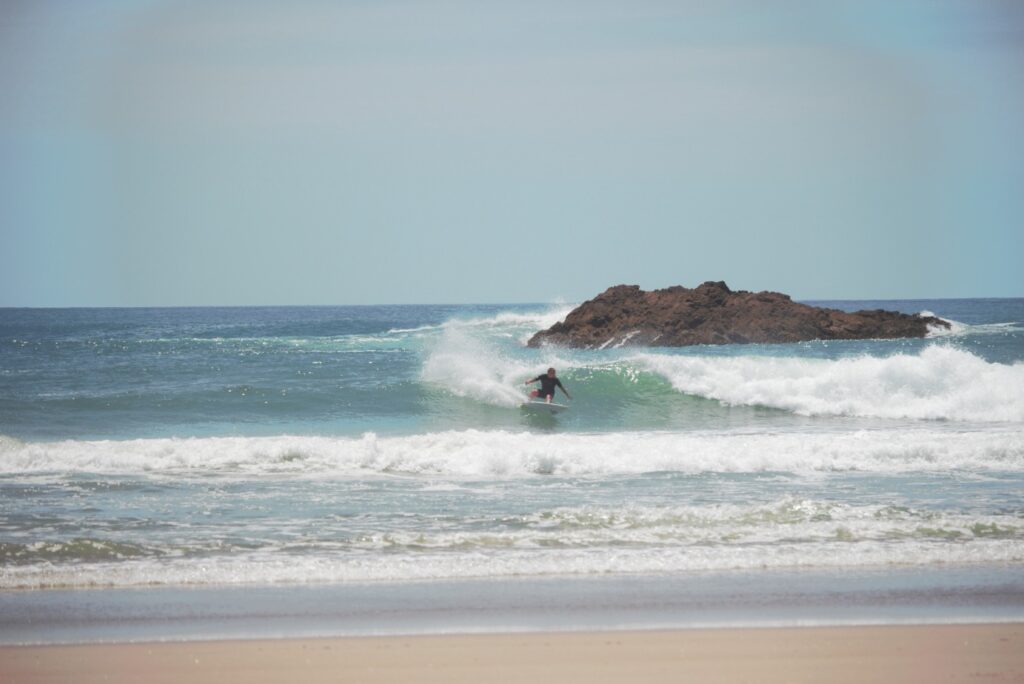Over the Easter break nearly the entirety of our office crew went over to Aotea aka Great Barrier Island aka ‘the Baz’ to catch some of the last summer sun, surf some big waves and participate in our Ecologists Jack’s birthday month celebrations! It was great to be back on the island and see it in its slowly changing autumnal colours and as active relaxers also managed to squeeze in a bit of botanizing, bat-ting and birding when we were not out slaying snapper in the bay. Here’s a little insight from Jack’s, Maddy’s and Dani’s time on the island.
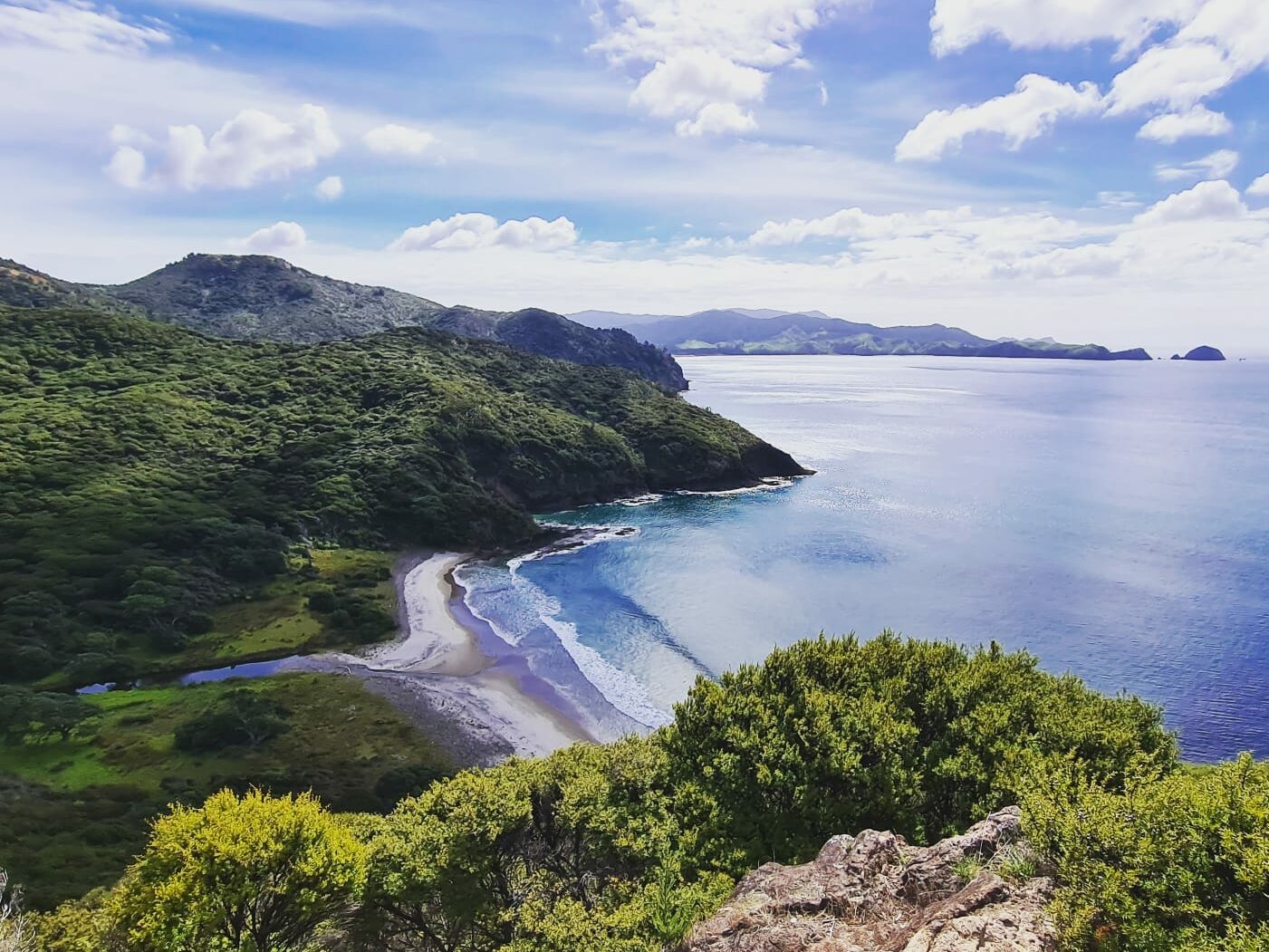
Up to Hirakimata (Mt Hobson) we go!
Easter Monday morning we woke up at stupid o’clock to attempt to catch a glimpse of a sunrise from the top of Hirakimata (and break Jack’s dads’ record for getting up there in less than 1 hrs time). Jack’s power walking got us up there in about 57 mins just to discover a complete whiteout. We’ll spare you the details and instead here’s a view from the last time we were up there last September.
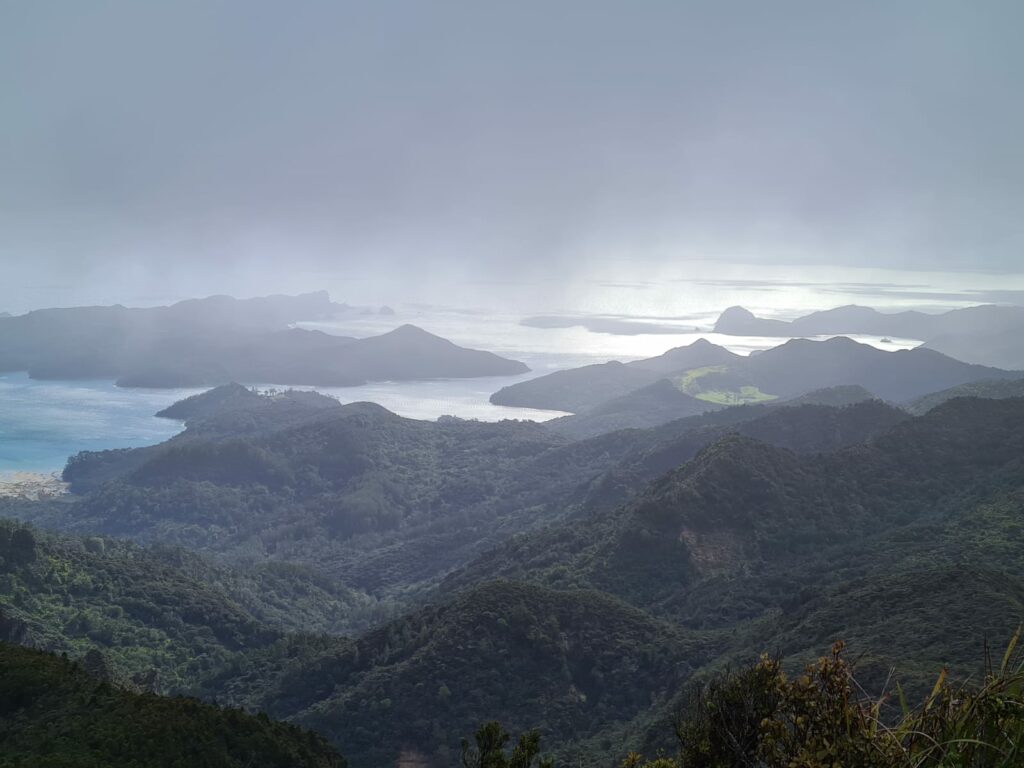
On the way down we were greeted by what first appeared to be a bunch of baby smurfs, but upon closer inspection appeared to be more closer related to werewere-kokako (Entoloma hochstetteri), our native blue mushroom. If you’re flush enough to have a bunch of $50 banknotes in your wallet, you probably have seen them before. Blue is such an unusual colour to see in the New Zealand’s green forest, so when you are out there it is a pretty spectacular organism to find…kind of almost surreal!
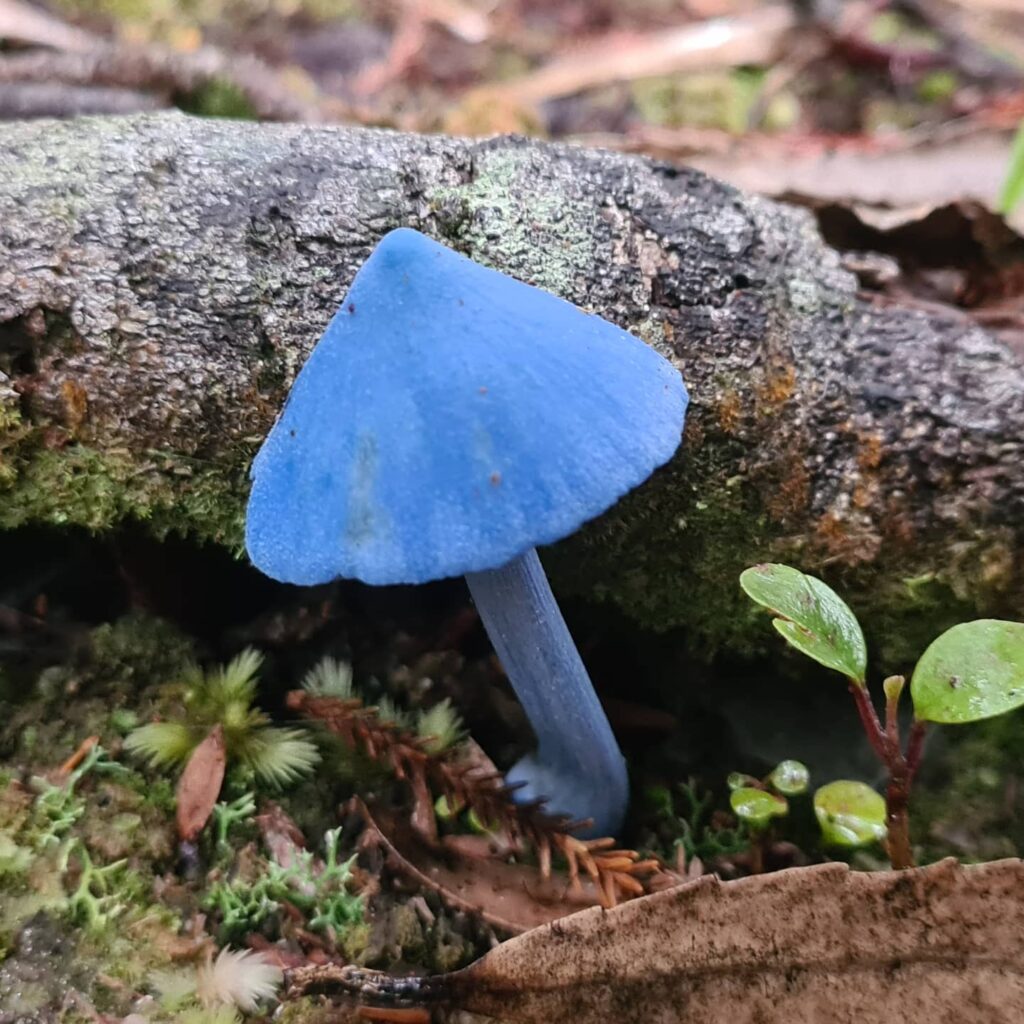
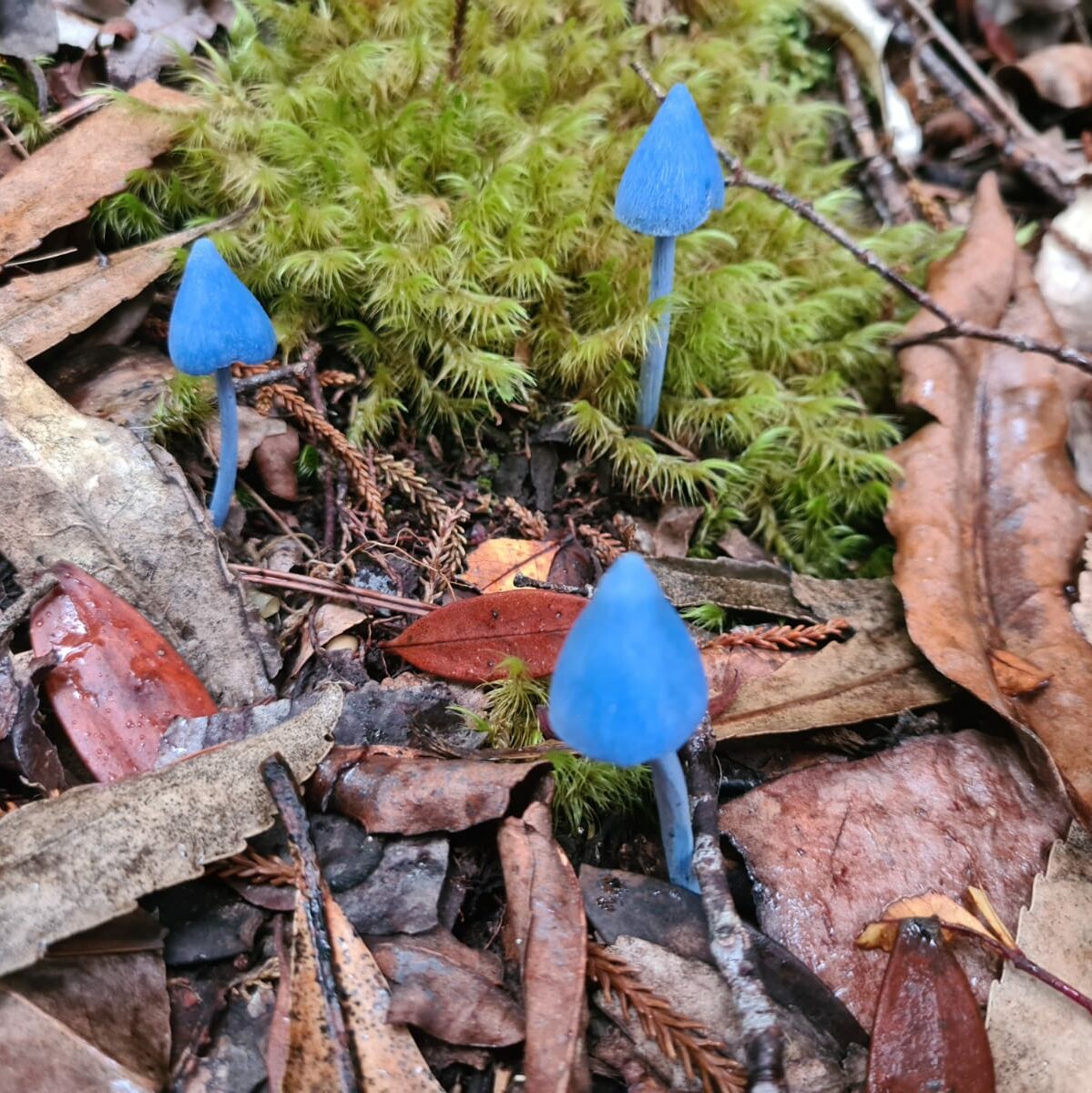
We were also lucky enough to spot a morepork/ruru (Ninox novaeseelandiae) on our way up, and snap some photos of leek orchid (Genoplesium pumilum) and pitted tangle fern (Gleichenia inclusisora). Although the vascular flora of Aotea is comparatively well-studied, there are still discoveries to be made, as pitted tangle fern was only first recorded in June 2019 by our very own Jack, along with Leon Perrie and Lara Shepherd.
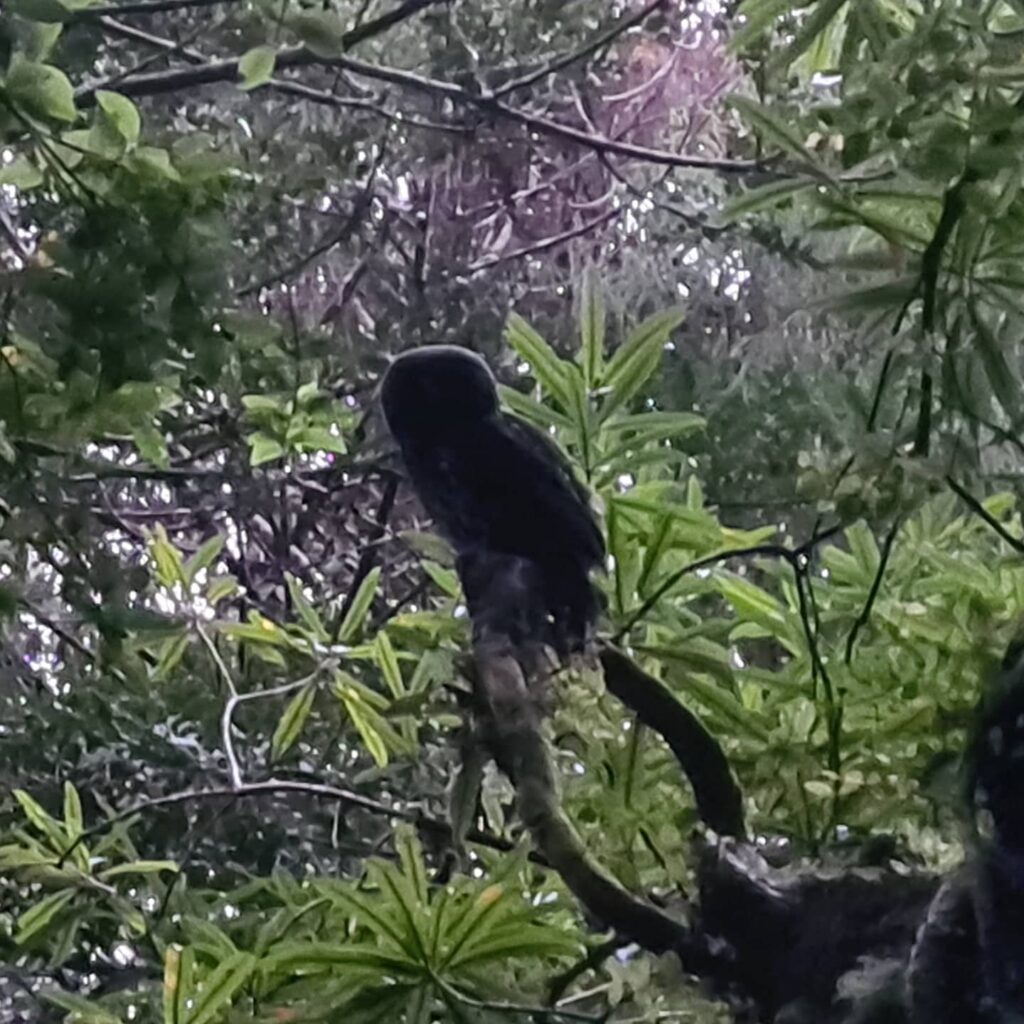
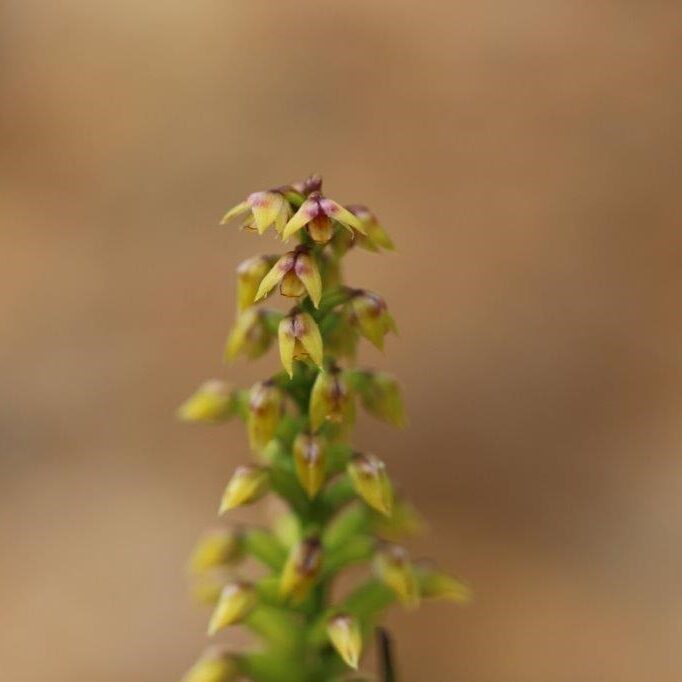
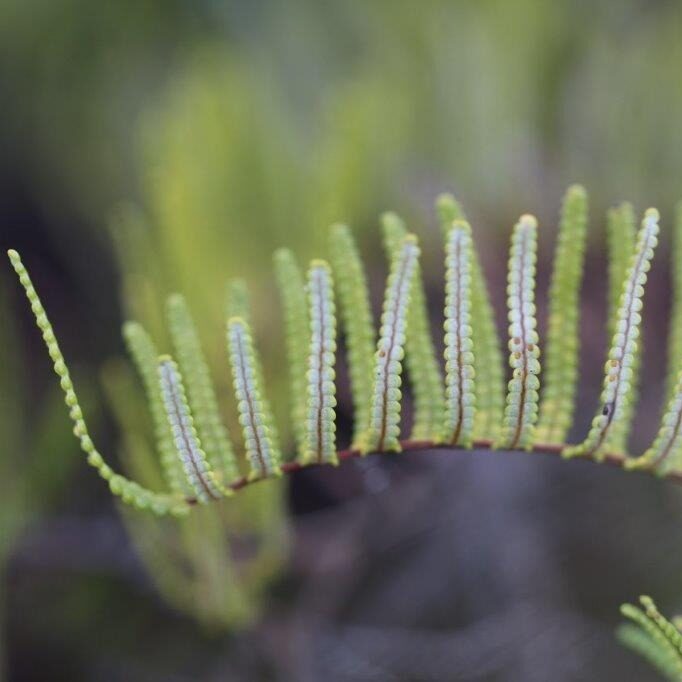
While the weather was not really playing ball, we had a great wee early morning hike and the way down was fueled by the proximity of bacon and chocolate egg brekkie.
Who said Easter was all about chocolate?
Our ecologist Maddy originates from the far away land of Latvia where at Easter people listen to oddly Viking sounding music while colouring eggs with onion peels, beetroot and tinsy flowers and leaves, and then smashing them against one another to establish a reigning egg champion, with bragging rights until the next Easter. Dads must have some sort of magical advantage, as Jack’s dad Jerry and his confident egg smashing technique beat us all.
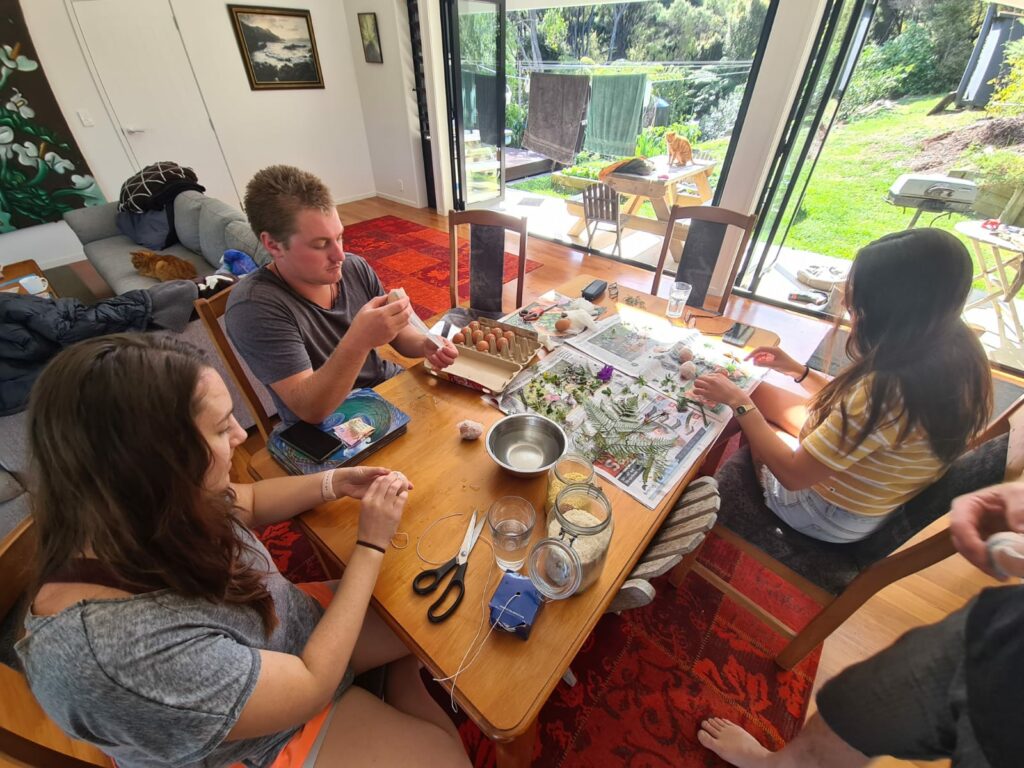
While our eggzos didn’t come out quite as planned (mainly due to bad memory and years of negligence of keeping up with traditions from Maddy’s part), we all had lots of fun and have learned some serious lessons for our next years egg colouring venture.
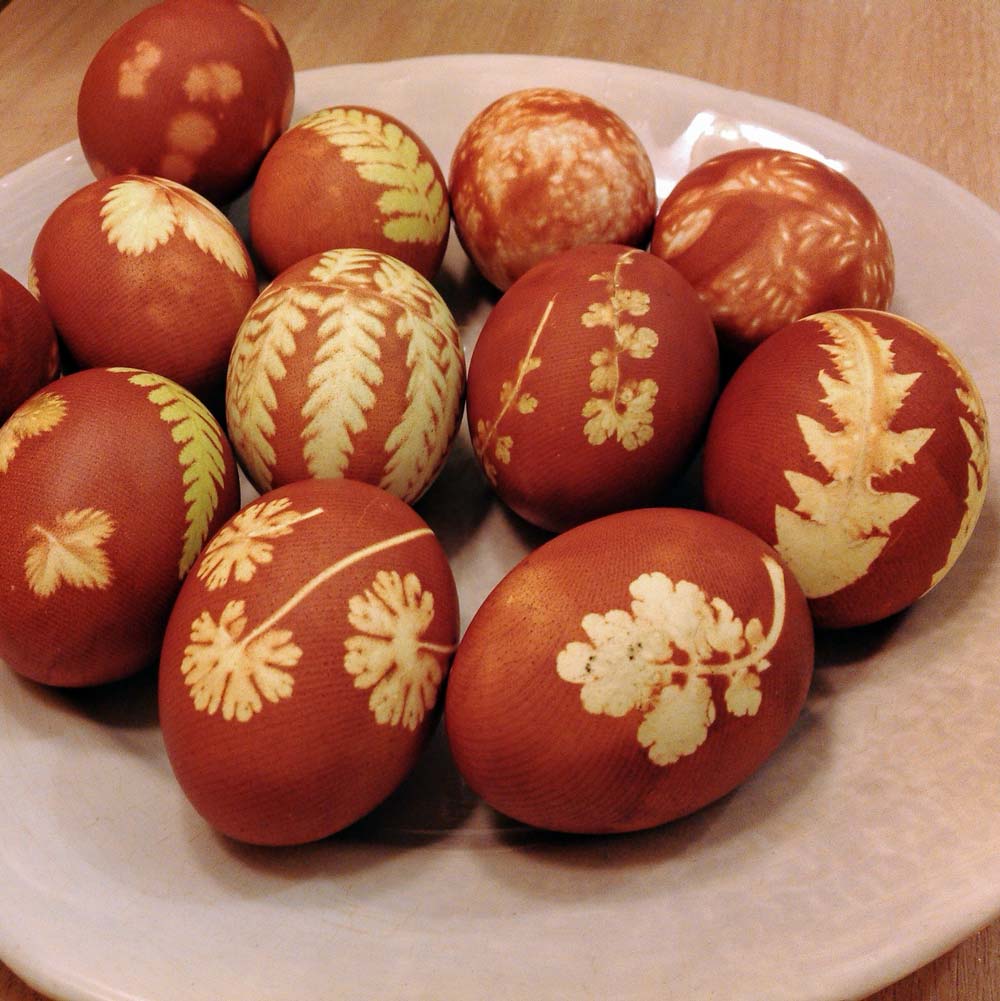
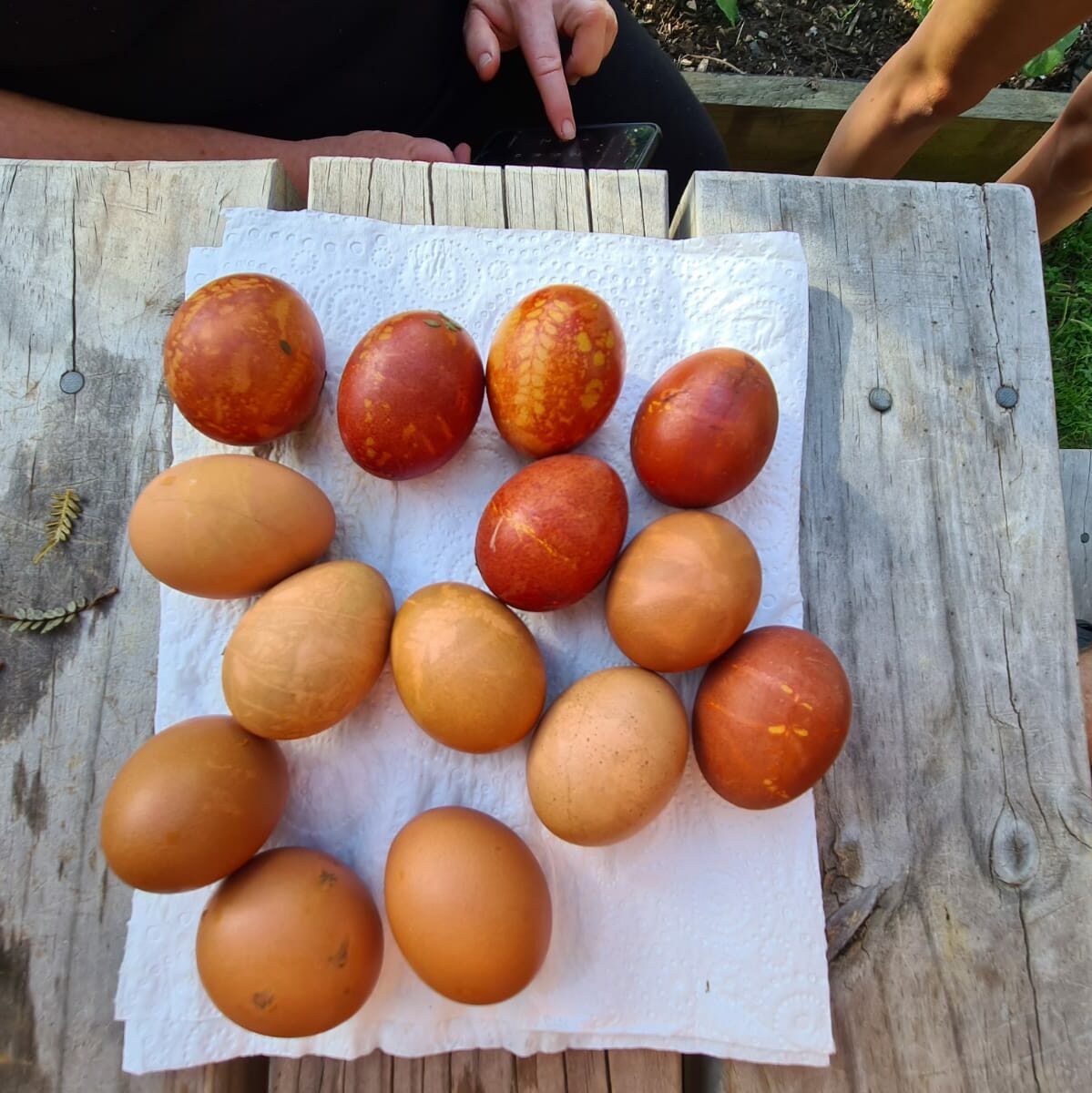
When in Rome
It wouldn’t really be a trip to the Baz without some serious fishing…I’m talking twice/thrice a day sort of event. Our snapper slayers Jack and Dani were really providing for the family, and soon enough we had enough kaimoana to feed an entire village.
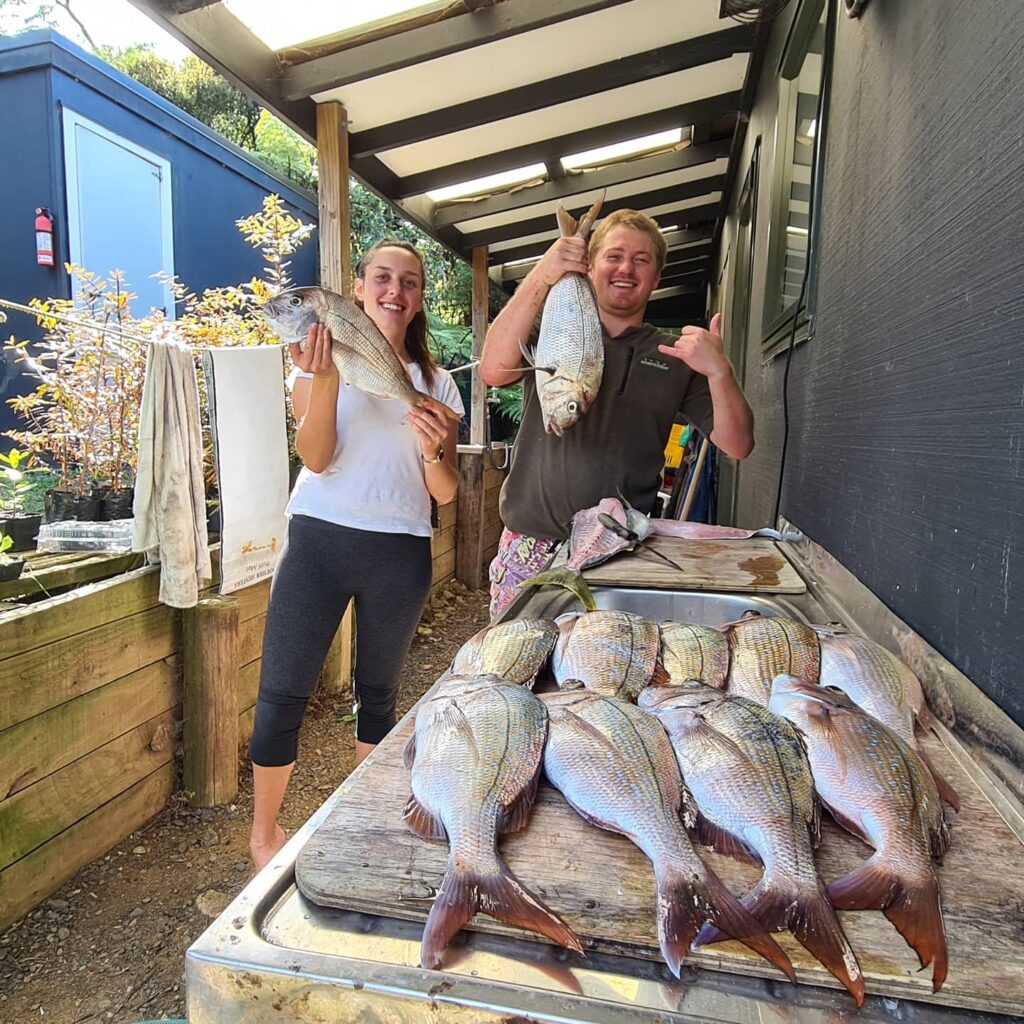
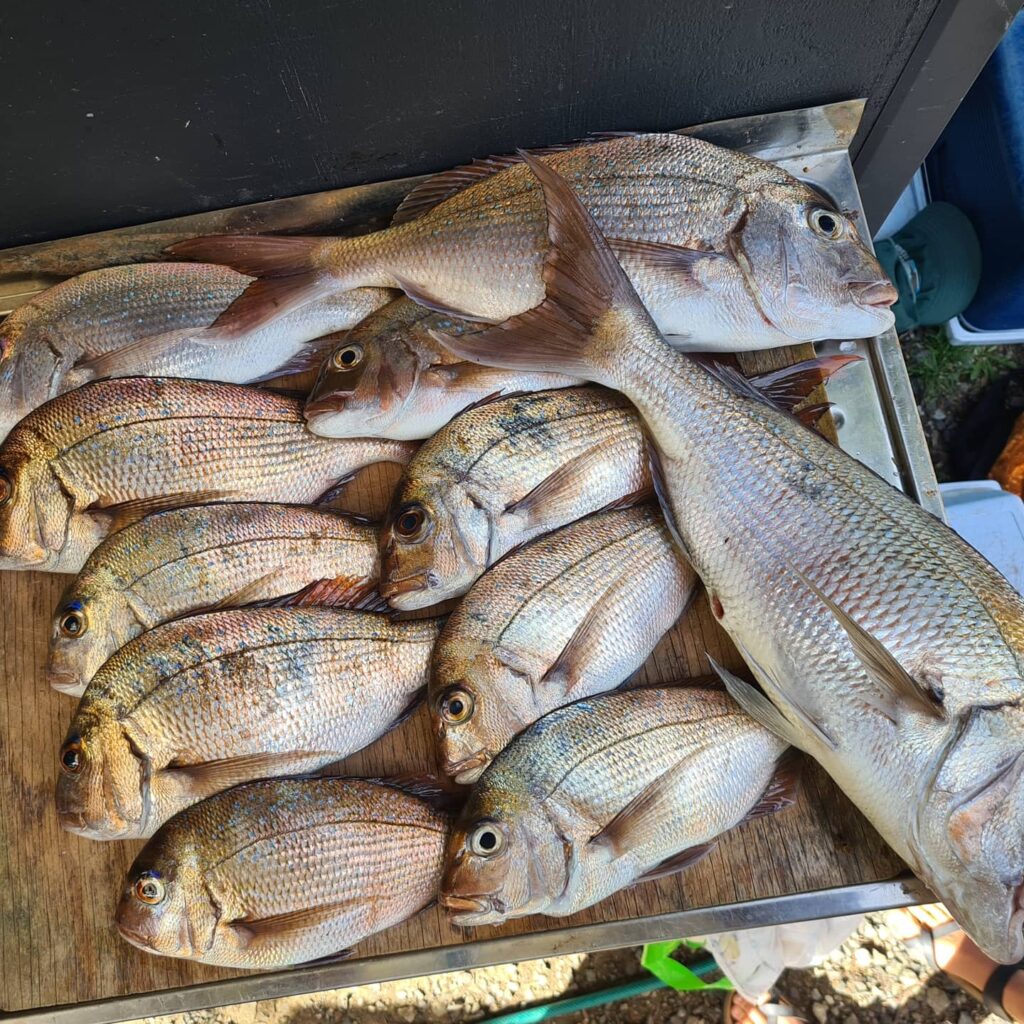
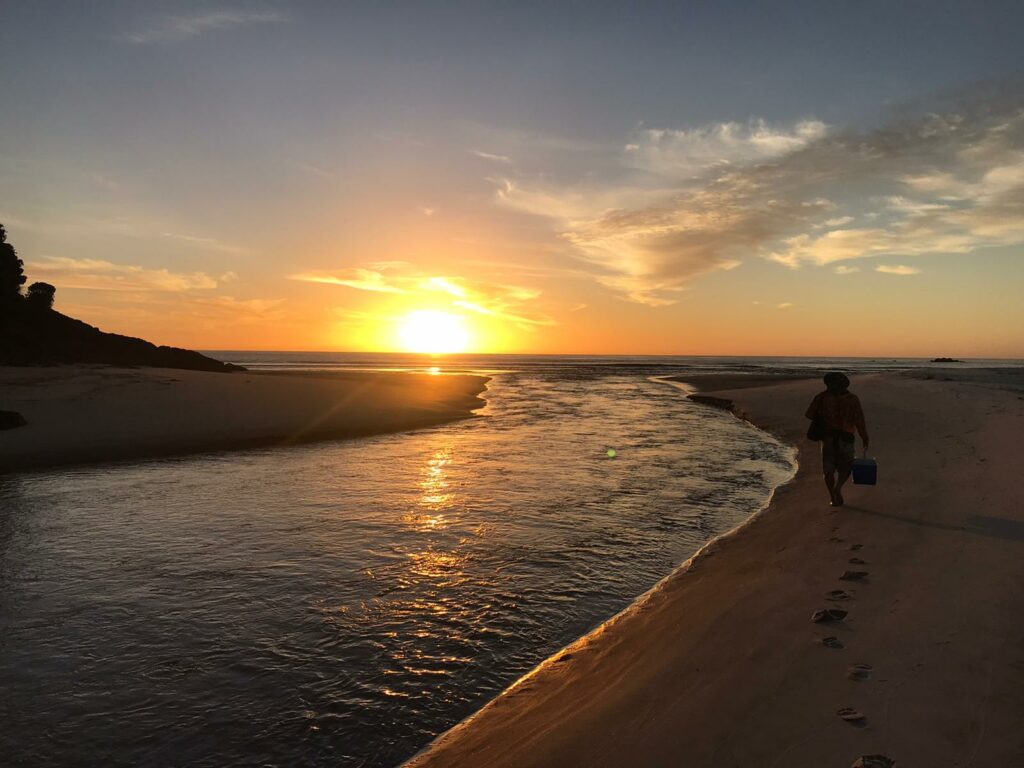
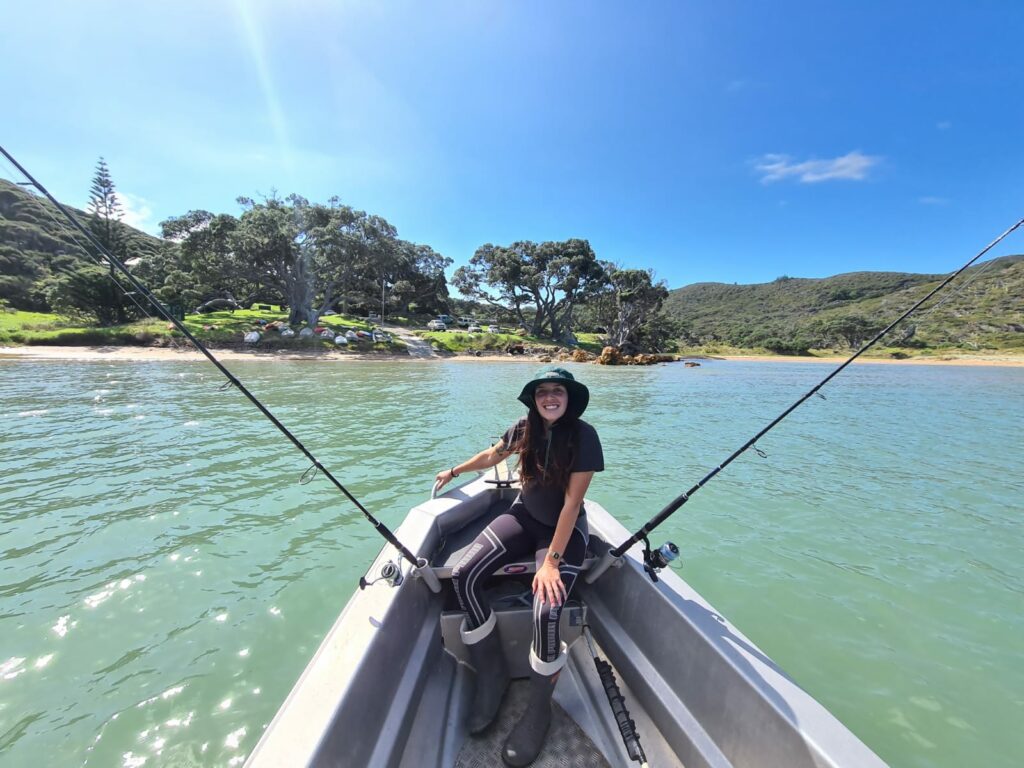
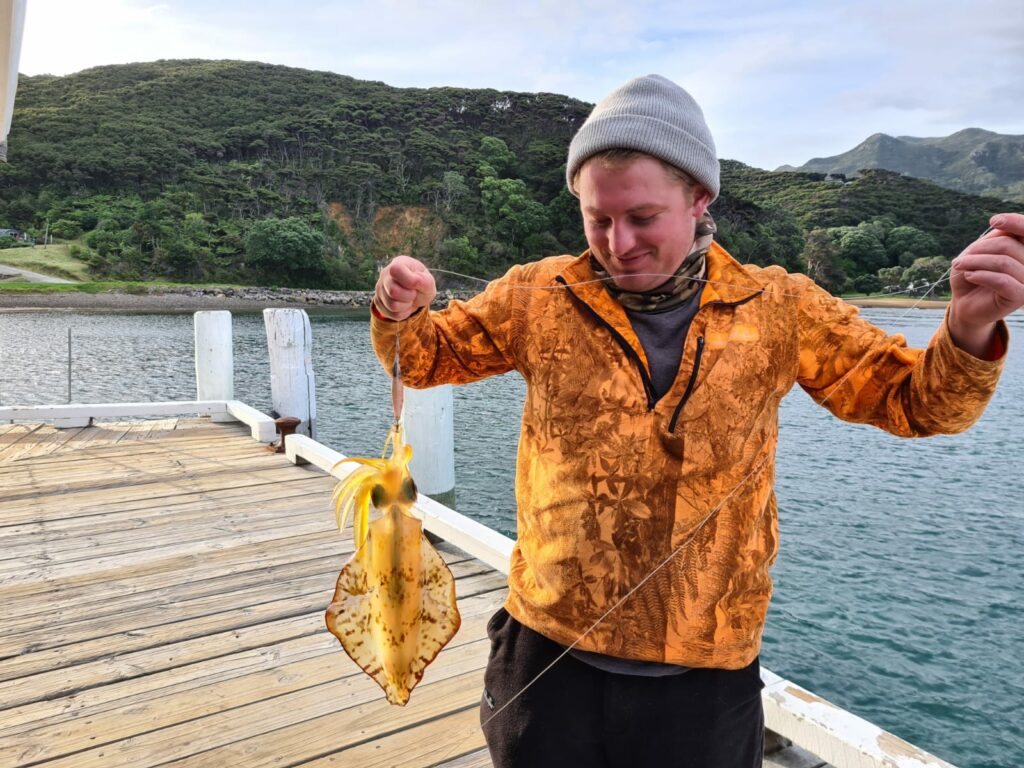
On the lookout for some locals
The first words spoken by our ecologist Maddy once landed on the Baz normally are “where should I go for a run” and “let’s go find some bats.” Ever since first coming to Aotea back in 2018 she has been on a constant lookout for the long-tailed bat (Chalinolobus tuberculatus) and having confirmed their presence in Windy Canyon, she has attempted to make recordings all over the island.
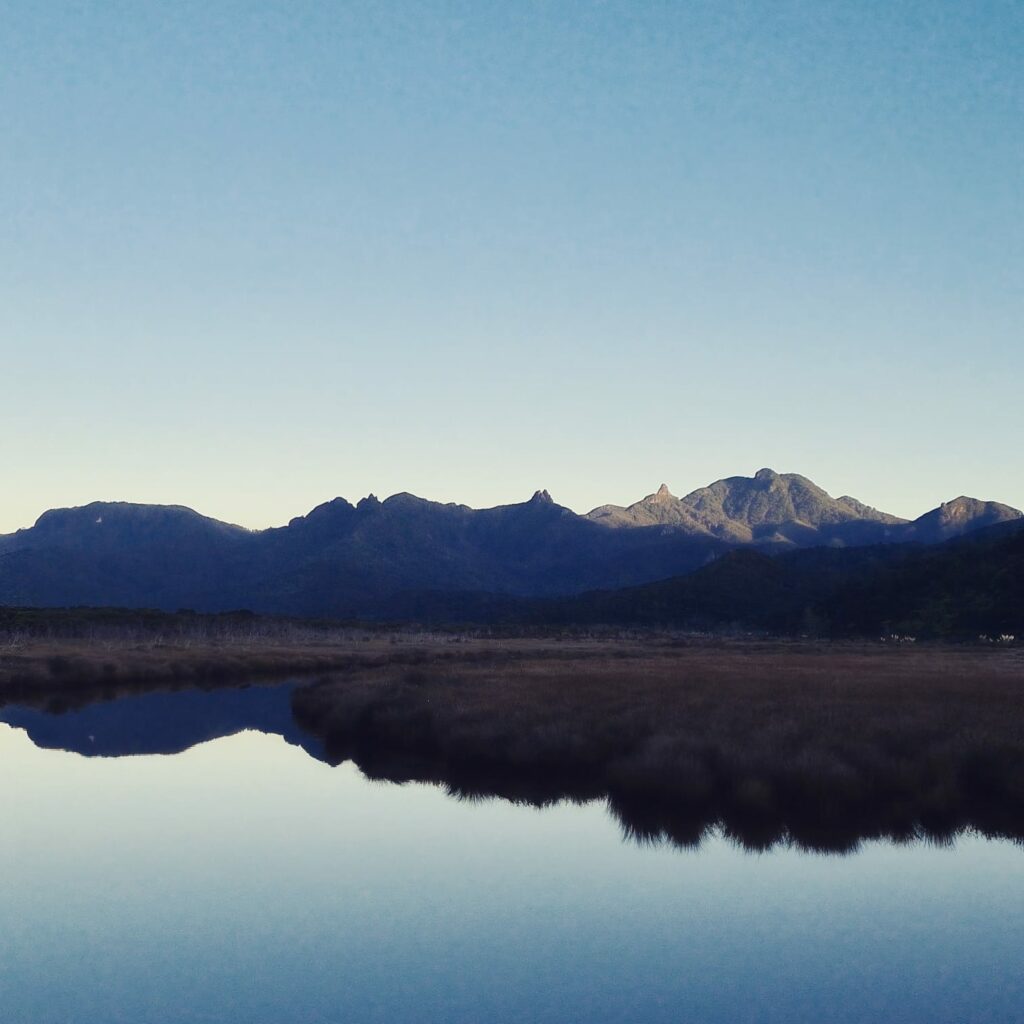
Unfortunately this time around our batty friends chose to not show face, but in her explorations she did manage to find another barrier local, the forest gecko (Hoplodactylus granulatus). Forest geckos seem to be a rare occurrence on the mainland nowadays, which is mainly associated with a high number of pest animals, habitat fragmentation and unrestricted stock access into core bush habitats. Glad to see they are enjoying the slow pace lifestyle of the Baz!
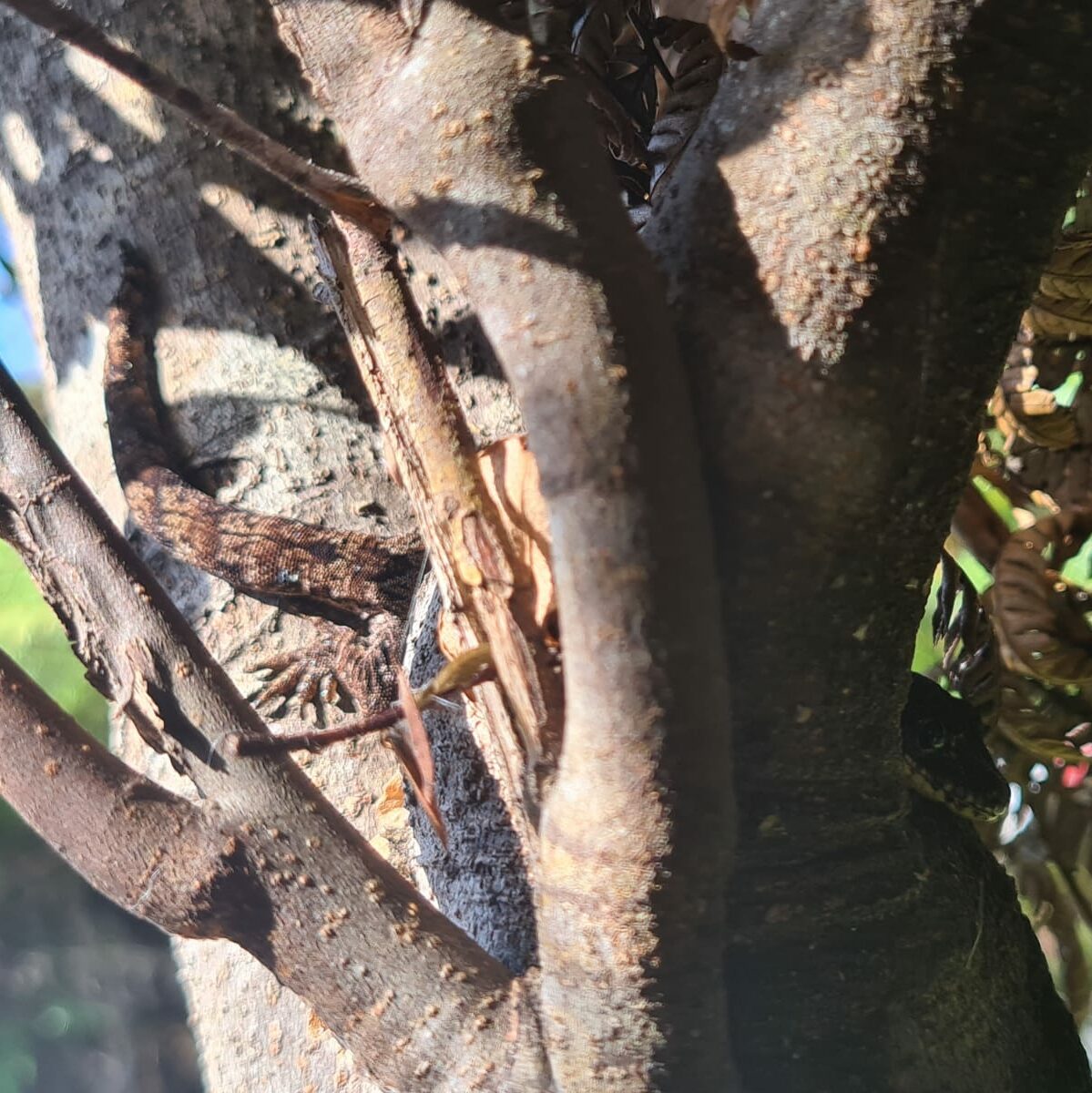
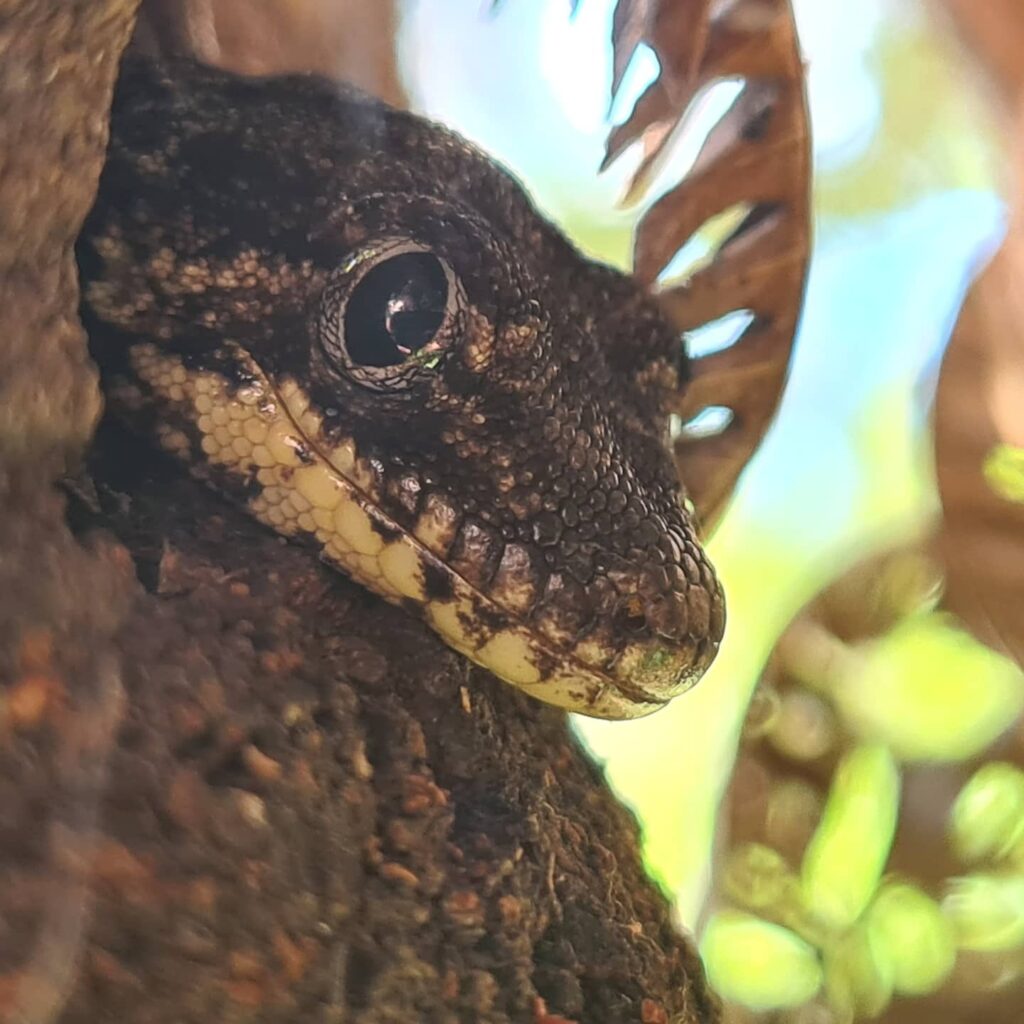
That’s all for now folks!
Back on mainland we’ve been slowly getting back to our projects, but can often be caught day dreaming about life on the Baz, and pondering about opening an ever so elusive off-shore branch of Rural Design on Aotea. You never know, eh?
